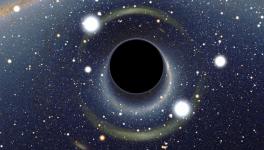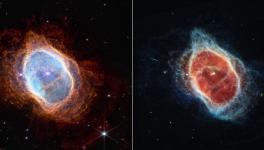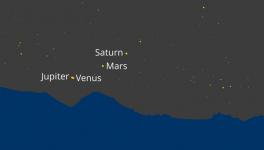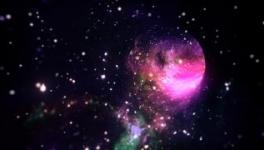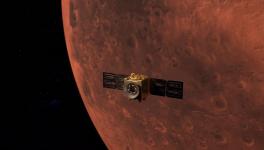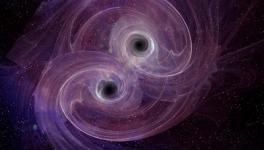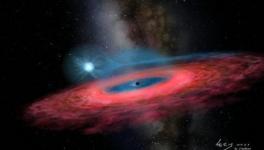United States Observatory Detects Biggest Neutron Star
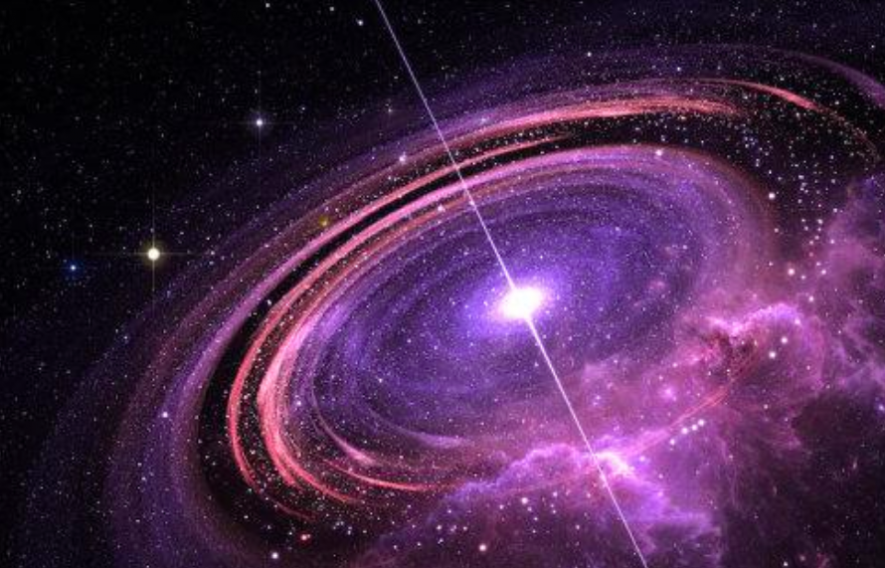
Image Used for Representational Purpose Only
The Green Bank Observatory of the United States has reportedly detected the biggest ever neutron star known to the mankind so far. Located 4,600 light years away from the earth, this massive neutron star has left astrophysicists perplexed. That is because of the mass of the supernova – according to the scientists, it is too massive to exist. Called J0740+6620, this new found neutron star is close to the theoretically predicted maximum mass that a neutron star can achieve.
The neutron star has been measured to have packed a mass 2.17 times the mass of the sun into a sphere only 30 kilometers across. This measurement also approaches the limit of how a massive single object can be compacted without crushing itself down into a black hole. Recent work involving gravitational waves observed from colliding neutron stars by LIGO suggests that 2.17 solar masses might be very near that limit.
Thankful Cromartie, a graduate student at the University of Virginia and Grote Reber pre-doctoral fellow at the National Radio Astronomy Observatory in Charlottesville, Virginia, said about the findings,“Neutron stars are as mysterious as they are fascinating. These city-sized objects are essentially ginormous atomic nuclei. They are so massive that their interiors take on weird properties. Finding the maximum mass that physics and nature will allow can teach us a great deal about this otherwise inaccessible realm in astrophysics”.
What is a neutron star and how it is formed?
A star does not twinkle forever, a star also dies. But what remains after the death of a star depends upon the mass a star has in its lifetime. A star with lesser mass would end up in something called the white dwarf, while a massive star would become a black hole after its death. But in between them, are the neutron stars. When a star with mass greater than the sun undergoes Supernova explosion, the compressed remnants make the neutron star—the densest normal objects in the known universe. The black holes are even denser and far from the normal.
What we see as the twinkling of the stars in our night sky is an outcome of a simple continuous process. In the stars, the simplest molecule hydrogen undergoes fusion and as a result helium is formed. In this fusion process, energy of an enormous amount is released, which in turn is radiated through space. This energy is what makes the stars shiny and we see the twinkling. But the fusion process, as other things in the universe, is not infinite. Billions of years after fusion and shining, a star runs out of the fuel and then the process of its death starts. The neutron star is also an outcome of such a billion-year process.
A neutron star, the leftover core of a massive star after the supernova explosion, is made up primarily of neutrons—the neutral entity in a molecule.
The most massive neutron star is also a rapidly spinning pulsar, which means that it emits twin beams of radio waves from its magnetic poles. These twin beams sweep across space, which can be imagined as the light from a lighthouse.
The Green Bank Observatory scientists were able to calculate the mass of the neutron star by studying the delay that occurs when the pulsar gets behind a nearby white dwarf star.
“The orientation of this binary star system created a fantastic cosmic laboratory. Neutron stars have this tipping point where their interior densities get so extreme that the force of gravity overwhelms even the ability of neutrons to resist further collapse. Each "most massive" neutron star we find brings us closer to identifying that tipping point and helping us to understand the physics of matter at these mindboggling densities” said Scott Ransom, an astronomer involved in the study.
Get the latest reports & analysis with people's perspective on Protests, movements & deep analytical videos, discussions of the current affairs in your Telegram app. Subscribe to NewsClick's Telegram channel & get Real-Time updates on stories, as they get published on our website.









